Opening up your analytics to see a drop in leads can also cause a drop of the heart.
Drops in leads can leave marketers grappling with questions about the causes, duration, and potential solutions.
Yet, it’s not always easy to get to the root of the cause with a concrete process to conduct a proper investigation.
In this article, we’ll explore common reasons behind sudden drops in conversions and provide insight into identifying the most likely sources of these issues for individual situations.
For businesses, especially B2B SaaS companies, one common reason for sudden drops in leads might be seasonality.
Seasonality refers to predictable periods within a year when customers tend to purchase less. These fluctuations in buying patterns can impact the number of leads generated.
For instance, closing deals typically become more challenging during the summer months (May to September) due to people taking vacations with their families.
Consequently, there might be fewer individuals exploring and buying business software products during this time.
When experiencing a significant decrease in leads, it is essential to investigate your analytics data to rule out technical issues.
If there are no underlying technical problems, seasonality could be the cause.
Keep in mind, that this dip in leads is usually a short-term issue, and it should recover within a couple of months.
To counteract the effects of seasonality, consider increasing your marketing efforts, such as email campaigns or promotions, in the months leading up to the expected drop.
By boosting conversions before the seasonal decline, you can compensate for the reduced number of leads.
Here’s a suggested process for tackling seasonality:
1. Open your GA4 Acquisition by navigating to Reports → Acquisition → User Acquisition

Choose July and August as your date range and compare it to the previous period:

2. Observe the percentage difference in goal completions between the months:

3. Calculate the lead decrease in absolute numbers (e.g., if your average is 200 leads/month and there’s a 10% drop, you would be down 20 leads in July and August).
4. To prepare for the next year, enhance marketing activities in the months before or after the seasonal dip to combat and make up for those lost leads.
B2B SaaS marketing can often be affected by holiday periods, especially those that are region-specific.
This is because these holidays can lead to reduced demand generation and lower engagement in marketing activities.
Being aware of these potential drops in leads and understanding how to compensate can help maintain your company’s performance.
For instance, B2B SaaS companies selling to North America may experience a sudden drop in leads during July, which has five holiday days due to Canada Day and July 4th weekends in the US.
Such regional holidays can impact the number of conversions.
One way to offset the effects of holiday periods is to increase marketing efforts in the months prior to or following these periods.
However, it’s also essential to analyze whether a drop in conversions matches the expected reduction due to holidays.
Using GA4, you can compare the percentage difference in conversions for specific goals, as done above when looking at a potential lead loss due to seasonality.
It’s important to note that conversions can still occur on weekends in the world of SaaS, especially with self-serve models; thus, weekend days associated with holidays should be included in this analysis.
In a scenario where the observed drop in conversions is similar to the calculated percentage, it is safe to assume that the decline is due to the holiday period.
However, if the drop in conversions is significantly larger than the expected reduction, further investigation might be necessary to identify deeper issues.
To assess the changes in organic search traffic, use GA4 to examine the variance in “New Users” coming through organic search.
Navigate to Reports → Acquisition → User Acquisition and select the date range comparison:
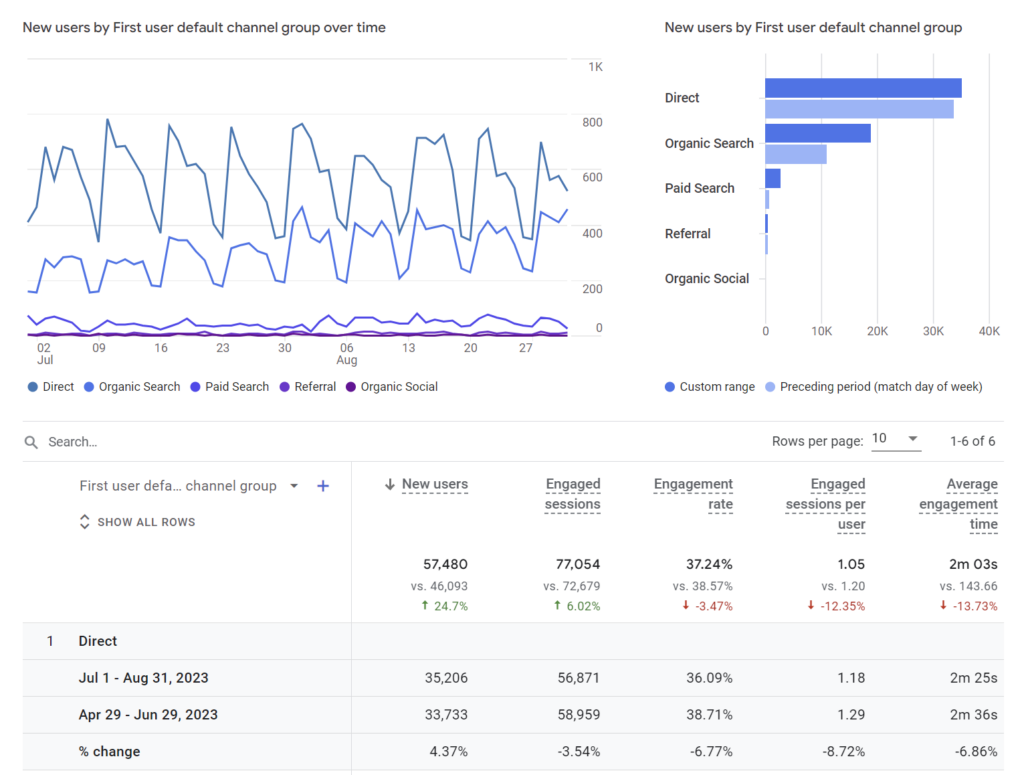
Consider this example:
If you experience a 20% decrease in organic traffic between two months, correlate this percentage decrease with the diminished conversions to determine if it could be a reason for the drop in leads.
For deeper analysis, In Google Search Console, go to Search Results → Select “Total clicks” and “Average position” → Select your date range
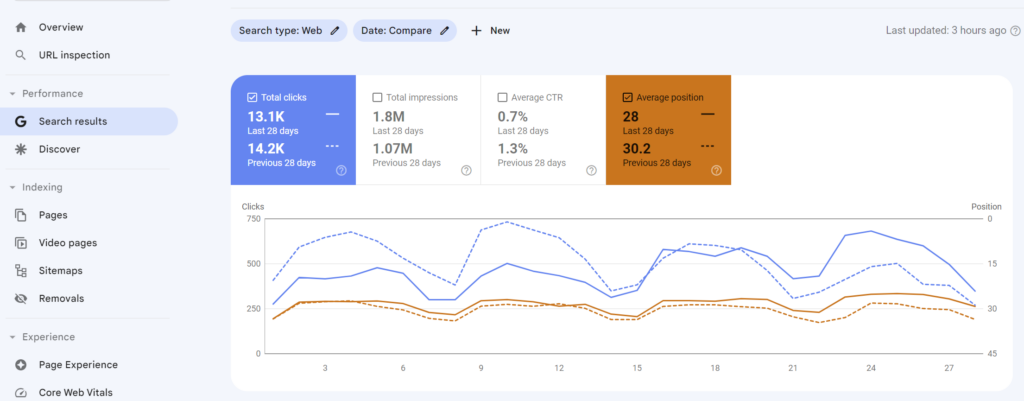
In this case, the account has ~1,100 fewer clicks in one month despite having a slightly improved average ranking position on average.
Now we can dive deeper at the page level to diagnose the drop.
Scroll down, and now we can filter the page results by clicking on Clicks Difference or Position Difference.
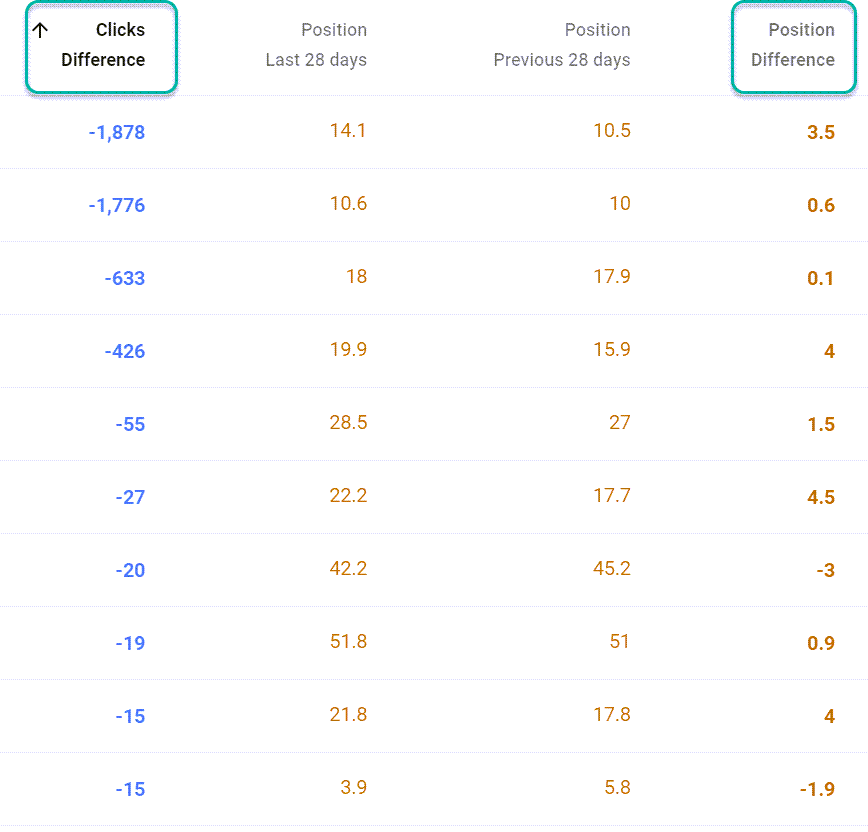
Taking this as an example scenario:
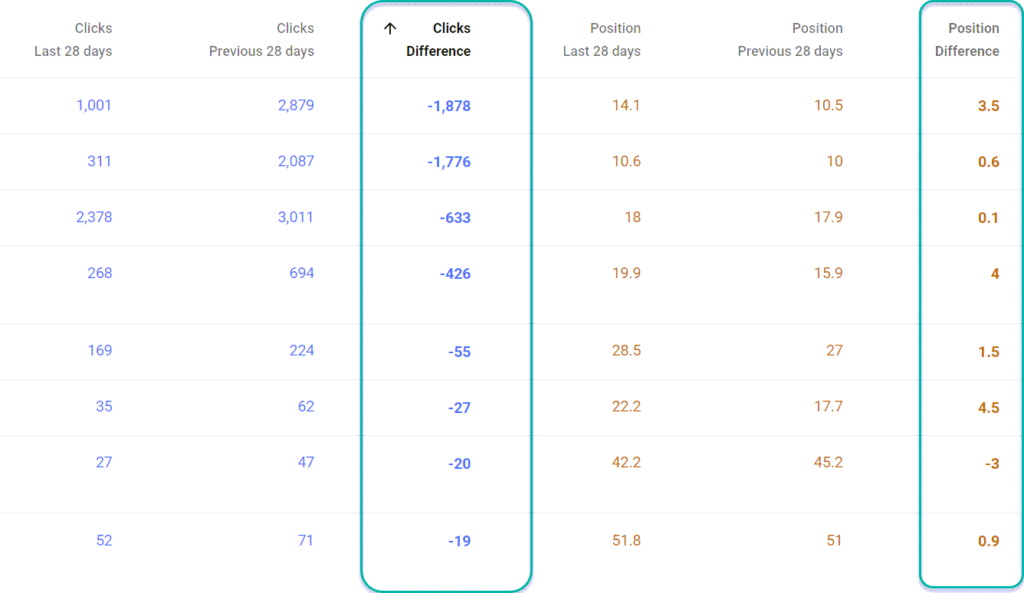
At a high-level, the traditionally top three performing pages received less clicks past 28 days vs. the previous period:
The last two we can likely attribute less searches happening during that period, since our positions on average remained the same.
For the first page, page #1, we saw a decrease in positions, likely resulting in a loss of clicks and traffic.
This is now a page we want to dive more deeply into to attempt to diagnose the drop:
In this scenario, the case was clear that the page slipped in search rankings due to outdated content and facts, which required an update and refresh to rebound to the top positions of the SERPs.
Further Reading: How to Conduct a Content Refresh
Investigating paid traffic as the source of a leads drop is more intricate compared to other channels.
Regular PPC optimization is crucial for achieving excellent results.
Metrics such as budget, average cost per click, search impression share, and clicks can change rapidly from week to week.
PPC teams might adjust for rising click costs or new competitors might affect the rankings.
To compare results, use Google Ads by going to Campaigns → Select Date Range

Take note of these aspects:
Observe significant changes in monthly results and further investigate through Google Analytics and ads accounts to verify if this is the cause of the lead drop.
Further Reading: SaaS PPC Optimization
When examining paid traffic, apply equivalent steps across all platforms where ads are running.
This thorough analysis will assist marketing teams in identifying the reasons behind decreased leads and implement solutions accordingly for various traffic sources, including organic and paid channels such as Google Ads, LinkedIn, Facebook, and other ad platforms.
A possible cause for a reduction in leads might be a decline in the on-page conversion rate.
Changes made to essential pages on your website, such as modifications in design and content, could considerably impact conversions.
For instance, a homepage that previously converted at 3% saw a 2x increase in its conversion rate to signups after updating the design and content.

It is crucial to note that updating pages can also lead to a decrease in conversions.
Unknowingly, SaaS businesses might make changes to vital landing pages, and as a result, the page’s conversion rate could drop substantially. Thus, examining this aspect is essential when encountering a sudden decrease in conversions.
To determine if this is the reason for the drop in leads, check the updates made to critical pages responsible for most of your conversions in the last month.
If you made modifications to the copy, design, or images, there is a chance that the new version is not as effective.
One potential solution is reverting the changes and observing whether the conversion rate improves during the recovery period.
If it does, reconsider updating the page in the future.
However, if the rate remains the same, continue examining other potential factors contributing to the problem.
Further Reading: Conversion Rate Optimization for SaaS
Sometimes, fundamental changes to a SaaS website can lead to a drop in conversion rates.
If there have been recent code updates by developers or designers, it is essential to verify that the conversion forms on key website pages remain functional.
A minor coding error can have a significant impact on conversions.
To identify possible technical issues, check for recent updates pushed to crucial pages within the past month. Common technical problems that can affect conversion rates include:
One method to further investigate these issues is to monitor user sessions through screen recording tools like Hotjar:
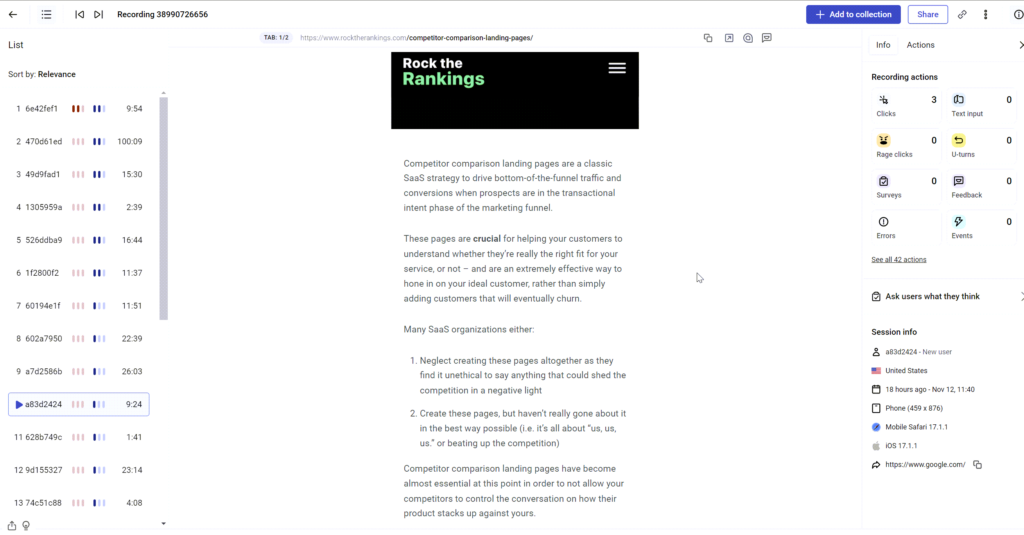
Look for signs of technical difficulties, such as:
It’s also worth examining event-level data for events like “submit button clicked” or “start trial clicked” to identify any drop-off.
Visualize the steps of your conversion funnel, and compare the progression of users between steps over time.
Focus on improving stages with little to no conversions and continuously monitor the results.

Experiencing occasional downturns in lead generation is a normal occurrence.
Having a well-established framework to identify and address such issues helps businesses be proactive in tackling technical problems and mitigating revenue losses.
This approach also enables companies to better understand natural fluctuations in leads due to seasonal or holiday periods.
Founder of Rock The Rankings, an SEO partner that helps B2B SaaS brands crush their organic growth goals. An avid fan of tennis, and growing micro-SaaS businesses on the weekend. 2x SaaS Co-Founder – Currently working to build and scale Simple Testimonial.
Book a 1-on-1 intro call with our founder that includes a FREE custom marketing plan. Start growing faster, today.